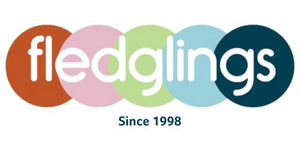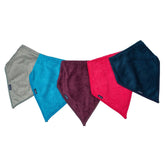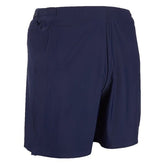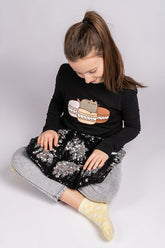Trending Now
Popular Products
Classic Kerchief in Bamboo Towelling
- £11.99
- £11.99
- (-0%)
- Unit price
- / per
-
Teal
-
Burgundy
-
Grey
-
Navy
- Berry
Kes-Vir Men's Swim Wrap Shorts
- £76.99
- £76.99
- (-0%)
- Unit price
- / per
Two Tone Sequin Weighted Lap Pillow
- from £35.99 (£43.19 inc VAT)
- from £35.99 (£43.19 inc VAT)
- (-0%)
- Unit price
- / per
-
Navy
-
Black
-
Pink
Need Help?
Email Us
Skin Picking: Practical Advice & Support
Skin picking (also called excoriation) is a repetitive behaviour that can lead to sore or broken skin. It may be linked to anxiety, sensory differences, boredom, or body-focused repetitive behaviours (BFRBs). With the right strategies and tools, you can reduce harm, protect skin and offer safer alternatives.
Safety note: If there are open wounds, signs of infection (heat, swelling, pus, fever) or rapid skin deterioration, seek medical advice. This page is general guidance only.
About BFRBs (Body-Focused Repetitive Behaviours)
Skin picking is one of several body-focused repetitive behaviours. Others can include:
- Skin picking/scratching (dermatillomania)
- Nail biting (onychophagia)
- Picking around nails/skin (onychotillomania)
- Lip, cheek or tongue biting (morsicatio)
- Skin chewing (dermatophagia)
- Nose picking (rhinotillexomania)
- Hair pulling (trichotillomania) and hair eating (trichophagia)
Approaching skin picking
- Use neutral, non-judgemental language; aim for harm reduction and safety first.
- Identify patterns (when/where/what feelings) and add structure to tricky times.
- Offer “busy-hands” alternatives and gentle cover layers while skin heals.
- Keep nails short and smooth; follow clinician guidance for itch, eczema or wounds.
- Change one thing at a time and celebrate small wins.
Who this can help
- Children and young people who pick or scratch skin during stress, waiting, or downtime
- Those with sensory differences who seek certain skin sensations
- Anyone who scratches at night due to itch, eczema or habit
- Parents, carers, schools and professionals looking for practical harm-reduction ideas
Quick wins
- Offer a “busy hands” alternative: keep small fidgets within reach (pocket, desk, car, bed).
- Cover & protect: use soft sleeves or scratch-mitt garments to minimise damage while habits change.
- Reduce triggers: manage itch/dryness; keep nails short and file smooth; use breathable layers.
- Plan “pick-times” down: add structure at known pick times (e.g. waiting rooms, TV time, bedtime).
- One change at a time: small, consistent tweaks usually beat big overhauls.
Practical strategies
1) Redirect the hands
- Choose quiet fidgets that repeat the same action (zip, roll, twist, squeeze).
- Keep a small kit at home/school; add one to the car/bag.
2) Protect the skin
- Use sleeves or mitt designs to reduce access to healing areas (especially at night).
- Pick soft, breathable fabrics for comfort; avoid scratchy seams/labels.
- Change and wash regularly; check fastenings and stitching for wear.
3) Reduce sensory/itch triggers
- Moisturise as advised by your clinician if eczema/itch is present.
- Choose cotton or other breathable layers; keep the room cool at night.
- Lower overall arousal where possible (quiet space, predictable routine, gentle transitions).
4) Routines & tracking
- Spot patterns: where/when does picking spike (subject, activity, place)?
- Use simple visuals or timers to add start–finish structure to tricky times.
Products that can help
Start with these ranges, then pick items that fit age, setting and budget. (Examples below stay as suggestions in case stock changes.)
-
Fidget & hand-busy tools – quiet, repeatable actions to redirect the urge
- Example: Sensory Fidget Zip Bracelet (3-pack) — wearable, repeatable zip action for “busy hands”.
- Example: Therapy Putty (set) — squeeze, roll and pinch to give deep resistance input.
-
Eczema & scratch-protect clothing – soft layers and integrated mitts for night/day
- Example: Scratch Mitten Body (Kids) or Scratch Mitten Body Plus — integrated mitts to minimise damage overnight.
- Example: Scratch Mitten T (Adults) — double-layer mitts for night use.
-
Protective sleeves – light cover to reduce damage while skin heals
- Example: Protective Arm Sleeves (Kids) and Protective Arm Sleeves (Adults) — breathable cotton sleeves, daytime or under uniforms.
- Calming sensory aids – body socks, lap pads, low-arousal tools to reduce overall arousal
- Sensory kits – create a small “regulation box” for known tricky times
Tips for success
- Agree a simple plan: “If I feel like picking, I will zip/squeeze for two minutes first.”
- Keep nails short and smooth; place emery boards where needed.
- Rotate alternatives so they stay interesting but predictable.
- Celebrate small wins; habits usually shift gradually.
Troubleshooting
- Picks reopen quickly: use a soft cover layer (sleeves/mitts) and increase moisturising as advised.
- Night-time picking: try integrated-mitt sleep tops; keep the room cool; add a tactile “sleep fidget”.
- School picking: provide a pocket fidget and a quiet signal to access it; add structure to waiting times.
- Worsening wounds or infection: pause product changes and seek medical advice.
Funding & budgets
- Potential funding options for families
- Digital catalogues to compare options by category
Need advice?
Email enquiries@fledglings.org.uk with age, setting (home/school) and where picking occurs most. We’ll suggest options that fit your budget. We accept Purchase Orders. UK delivery from £4.99.
Support our work
Donate to Fledglings to help us keep advice free and prices fair.
Related
Last reviewed: 12 September 2025
- Choosing a selection results in a full page refresh.







